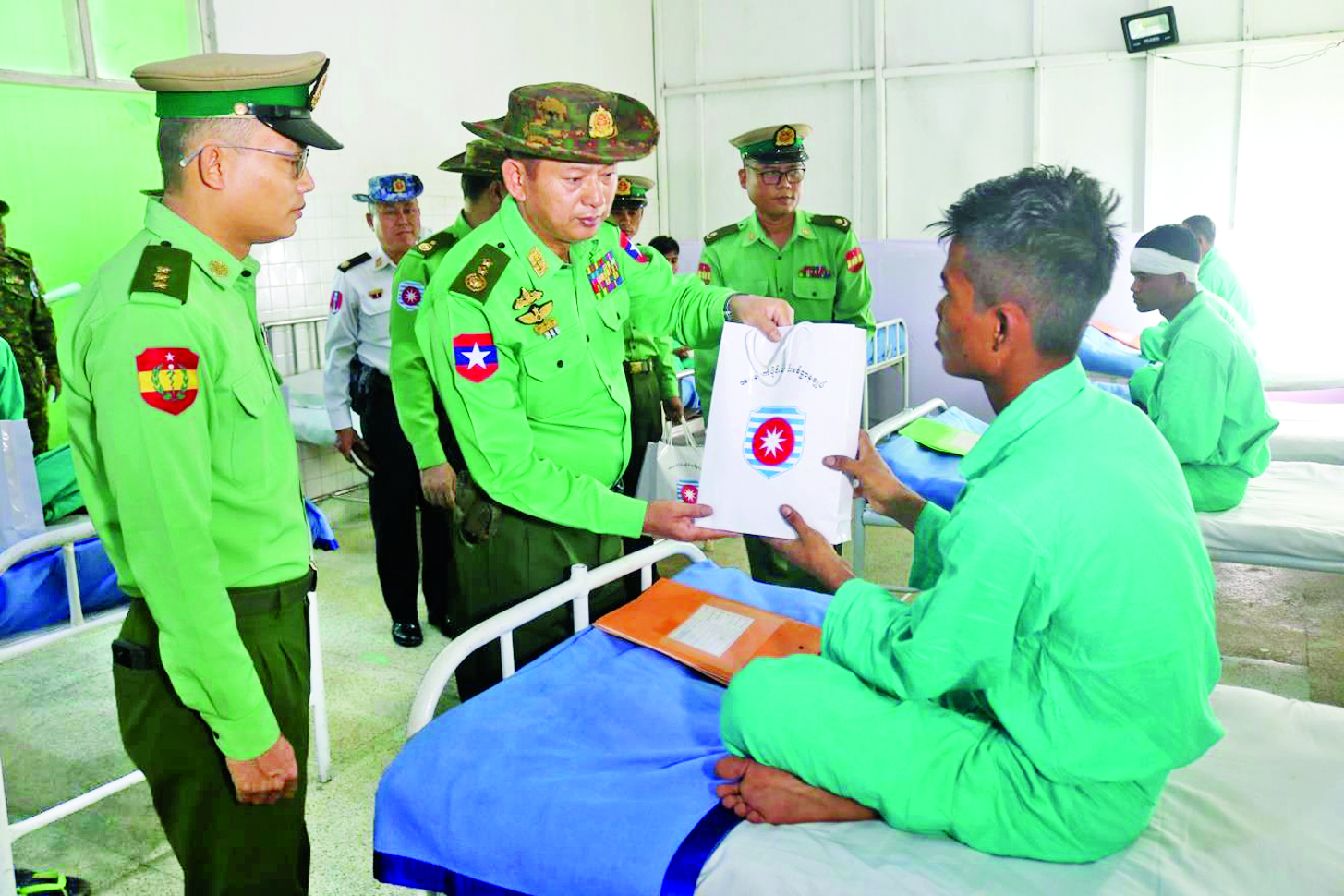- Junta unable to hold elections in dozens of wards and village-tracts in Sittwe, Kyaukphyu
- Fighting escalates between Myanmar military, Arakan Army in Ayeyarwady Region
- Regime steps up civilian arrests in Sittwe
- ULA safeguards Mrauk-U's ancient heritage
- Arakan on the Edge: What the DMG Landmine Impact Report Reveals About Myanmar's Deepening Humanitarian Crisis
As Sittwe Creek Narrows, Its Prospects Dim
On a recent visit, DMG found that at least five vessels had been abandoned in Sat Roe Kya Creek, with some badly rusted out and others left in the middle of the creek. DMG was told that some of those vessels are owned by the department of Inland Water Transport and previously ran routes on various waterways in the state, but had been retired and left to ruin in the creek.
01 Oct 2022

Written by Thiha
With boats and other vessels docked at its jetties, the aerial view of Sat Roe Kya Creek in the Arakan State capital Sittwe can be impressive. But the creek, which has for generations been crucial to ensuring the flow of commodities not only to Sittwe, but to much of Arakan State, has been besieged by decades of population pressures and is deteriorating year by year.
It is the creek where vessels plying routes between Sittwe and other townships in Arakan State are moored. It is also the place where cargo vessels from Myanmar’s commercial capital Yangon unload their cargo. It is also a protective haven for small boats and fishing trawlers looking for shelter against storms.
The creek has been shrinking, however, and is increasingly clogged with waste. What’s more, abandoned boats, numerous pontoon bridges, floating garbage and eroding banks have turned the creek into an ugly sight.
As the creek has become shallower and narrower, cargo vessels have to wait for the tide, which delays the transportation of cargo.
On a recent visit, DMG found that at least five vessels had been abandoned in Sat Roe Kya Creek, with some badly rusted out and others left in the middle of the creek. DMG was told that some of those vessels are owned by the department of Inland Water Transport and previously ran routes on various waterways in the state, but had been retired and left to ruin in the creek.
Meanwhile, there are dozens of small pontoon bridges along the creek. Some of them are solid structures built with concrete, with these bridges negatively affecting the flow of water in the creek, conservationists point out.
Critics say the negligence of authorities under successive governments is to blame for the sorry condition of the Sat Roe Kya Creek today.
“Under successive governments, authorities failed to take proper care of the creek,” said the vice chairman of Rakhine Economic Initiative Public Co Ltd, U Khin Maung Gyi. “As years go by, the creek has become shallower and narrower, and the trade flow is affected.”
He added: “The creek has silted up and become narrower. Authorities must act carefully.”
Arakan State is a coastal region with major rivers including the Naf, Mayu, Laymyo and Kaladan flowing through it. Smaller tributaries of such rivers flow through towns and villages across Arakan State.
Under British colonial rule, Sittwe became a major hub for maritime trade. Growing from a village to a town to the capital of Arakan State, Sittwe owes its development in large part to the waterways around it.
The Myo Lae Creek mainly contributes to the irrigation system of Sittwe, and Sat Roe Kya Creek mainly contributes to trade. Rice merchants from all over Arakan State once came to Sittwe by sea to trade rice along the Sat Roe Kya Creek. It is said that there were up to 33 rice mills along the Sat Roe Kya Creek in the past.
With most of the rice produced in Arakan State sold in Sittwe, the city prospered, and exported large quantities of rice until the end of the 20thcentury.
Some locals say that if the Sat Roe Kya Creek can be comprehensively dredged and jetties are developed, it could once again become a major driver of economic activity.
DMG was unable to obtain comment from the Directorate of Water Resources and Improvement of River Systems (DWIR) regarding preservation of the Sat Roe Kya Creek. An official from Arakan State’s Ministry of Road Transport said there is no budget to dredge the Sat Roe Kya Creek, and there is currently no plan to dredge it.
With the number of ports for unloading goods in Sittwe still low, the Sat Roe Kya Creek could facilitate the more efficient transportation of goods to and through the Arakan State capital, merchants say.
“A cargo ship coming out of Yangon has difficulty docking when it arrives in Sittwe because there are not enough ports in the Arakan State capital,” said U Tin Aung Oo, chairman of the Rakhine State Chamber of Commerce and Industry. “There are some small jetties in Sittwe’s Mingan Ward. Baung Daw Gyi port is located in downtown Sittwe. When the number of ships is high, the flow of goods is a bit difficult because there are few ports for ships to dock.”
Due to the shallowing and narrowing of the creek, entrepreneurs along the upper reaches of the Sat Roe Kya Creek have to wait to launch their cargo ships until the tide is high. Some of the larger cargo ships are faced with a situation where they cannot be used on the creek at all.
The Sat Roe Kya Creek, which stretches for about eight miles, was last dredged in fiscal years 2011-2012 and 2013-2014 with the use of Union budget funds, but its shallowing in the years since is apparent.
Since the 1800s, the Sat Roe Kya Creek has been an important spoke in the commercial hub that was and is Sittwe. These days, however, its neglected waters are in need of attention, if the waterway is ever to be restored to its former place of prominence.

















